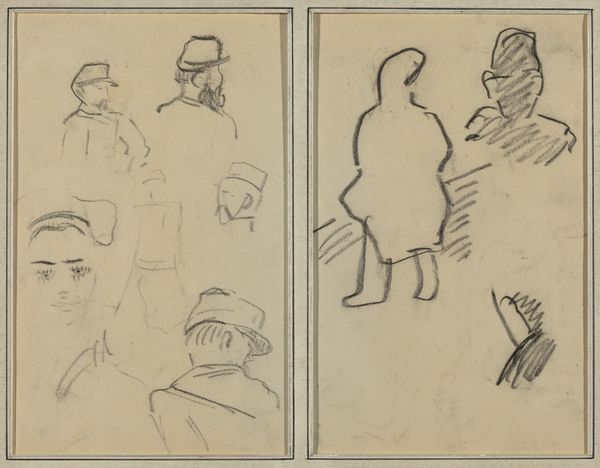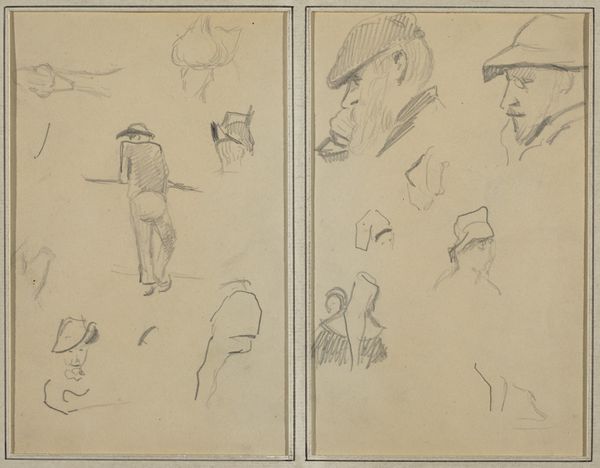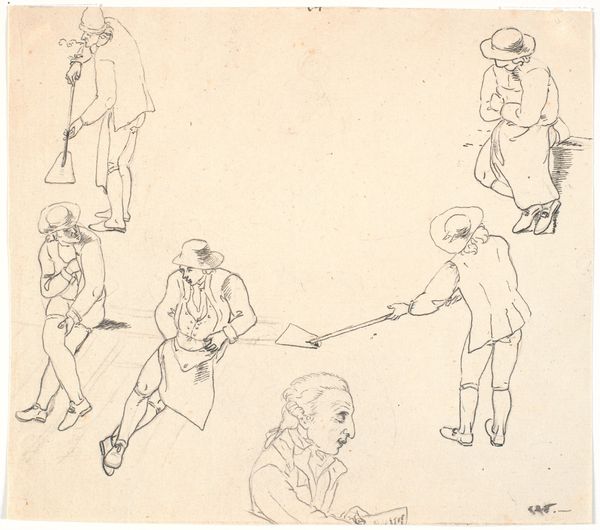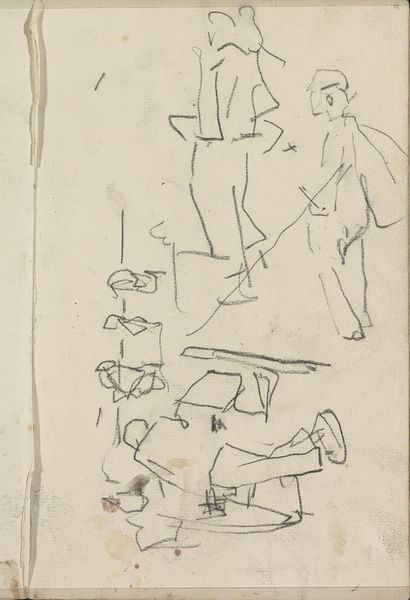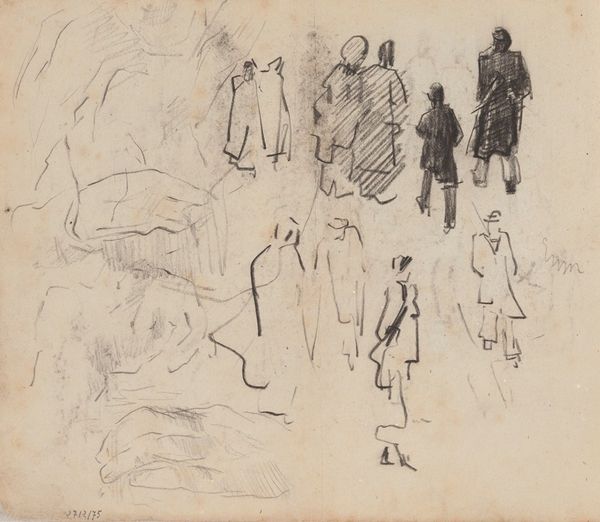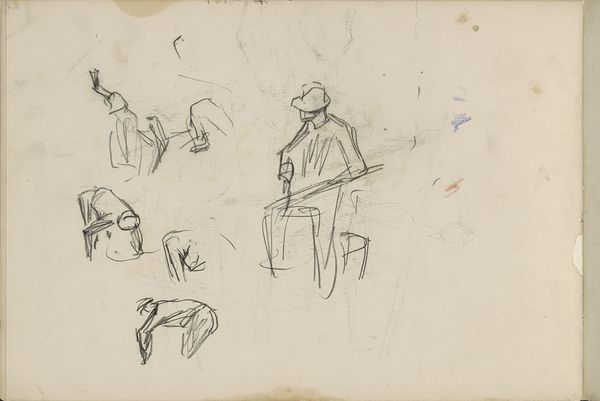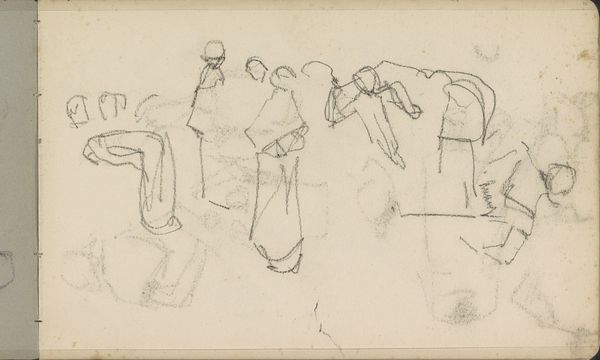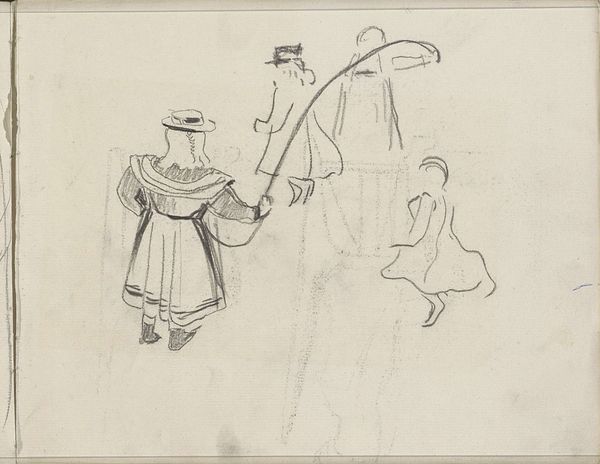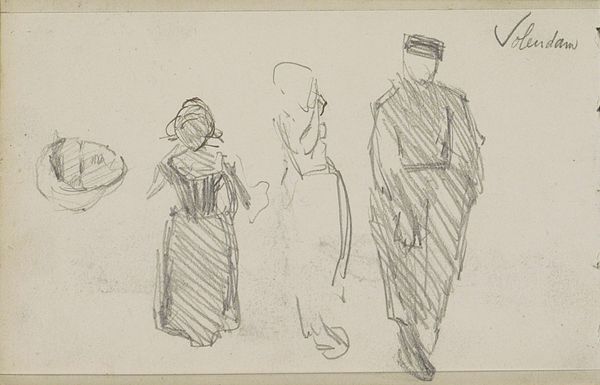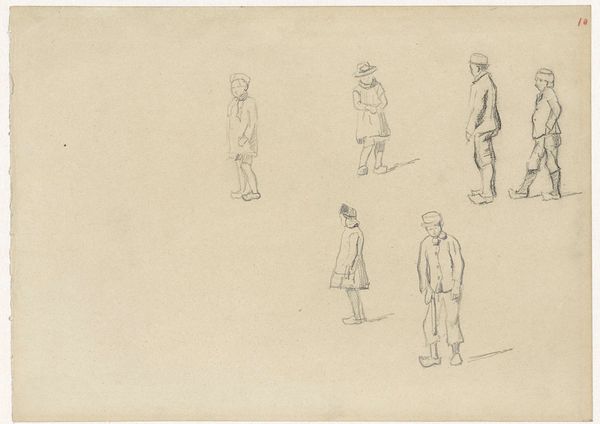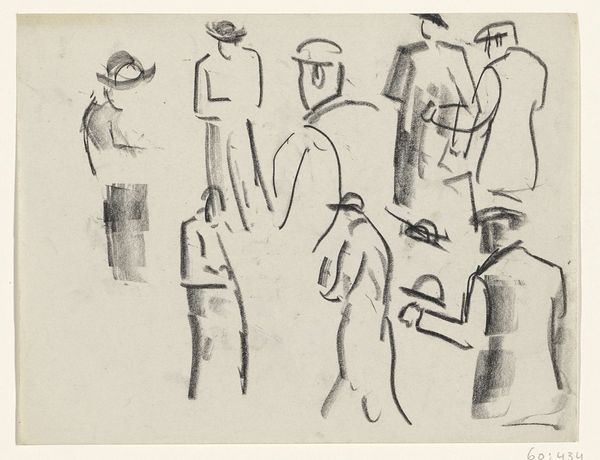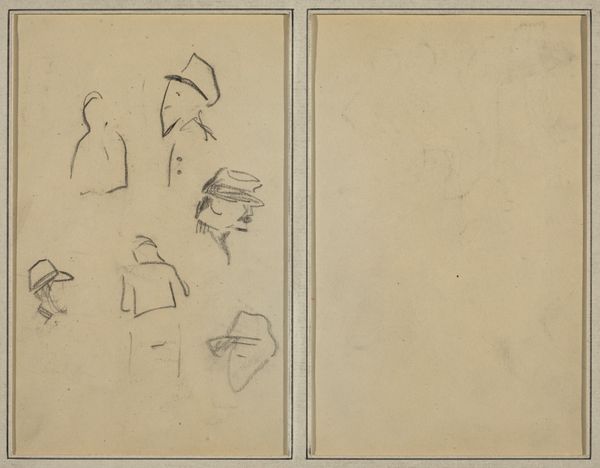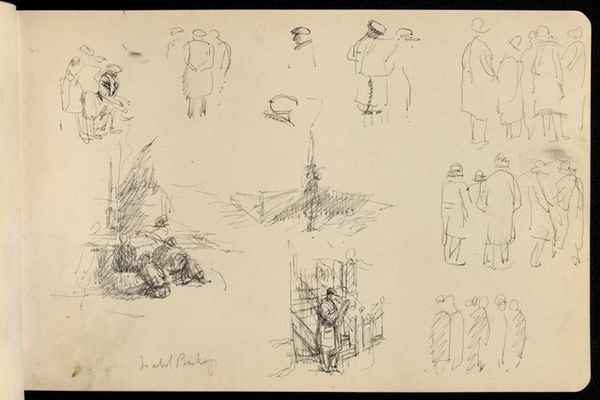![Figure Studies; Studies of Soldiers [verso] by Paul Gauguin](/_next/image?url=https%3A%2F%2Fd2w8kbdekdi1gv.cloudfront.net%2FeyJidWNrZXQiOiAiYXJ0ZXJhLWltYWdlcy1idWNrZXQiLCAia2V5IjogImFydHdvcmtzLzg0MzYzZmFlLWQ1MTctNDhkNC04Y2I2LTI1MTcxZGI0NjNhZS84NDM2M2ZhZS1kNTE3LTQ4ZDQtOGNiNi0yNTE3MWRiNDYzYWVfZnVsbC5qcGciLCAiZWRpdHMiOiB7InJlc2l6ZSI6IHsid2lkdGgiOiAxOTIwLCAiaGVpZ2h0IjogMTkyMCwgImZpdCI6ICJpbnNpZGUifX19&w=3840&q=75)
drawing
#
portrait
#
drawing
#
self-portrait
#
impressionism
#
figuration
Dimensions: overall: 16.9 x 22.6 cm (6 5/8 x 8 7/8 in.)
Copyright: National Gallery of Art: CC0 1.0
Curator: This drawing, entitled "Figure Studies; Studies of Soldiers [verso]", was rendered by Paul Gauguin between 1884 and 1888. What's your first impression? Editor: Hmm, it feels like a fleeting moment captured—almost like eavesdropping on ghosts in a bustling Parisian street, their forms barely there. Curator: Absolutely, it’s raw, isn't it? Look at how Gauguin uses charcoal to define these figures. On the left, we see amorphous shapes hinting at crowds, while the right side presents soldiers, their outlines more deliberate but still gestural. There’s an interesting duality at play. Editor: Yes, the juxtaposition is striking. I'm drawn to the contrast between the fluid, almost chaotic left panel and the more structured, militaristic right panel. It speaks to the internal tension Gauguin might have been experiencing, the push and pull between societal expectations and personal expression. Curator: Perhaps, or maybe just the daily sketches from the sketchbook of an artist deeply interested in modern life around him! Notice how he uses negative space; the figures emerge from the paper itself, undefined, like memories fading at the edges. Editor: Good point. And the varying levels of detail within the sketches! The left is pure suggestion—barely registering as figuration. But then, the faces on the right…those fleeting expressions suggest a desire for realism struggling against an impulse towards abstraction. Curator: It's the kernel of Impressionism at its best. It captures a momentary truth instead of solidifying reality. Though on close viewing, one might wonder whether it's finished. Editor: I think that's precisely where its strength lies—the unfinished quality heightens the sense of immediacy. Gauguin is showing us not just the figures, but the very act of seeing, of trying to grasp form in a world of constant change. Curator: Exactly! It serves as a fantastic reminder that the beauty of art sometimes exists in that liminal space, in the suggestive and the imperfect. It's refreshing. Editor: Agreed. Looking at this has certainly reshaped how I’ll approach considering sketches in the future, understanding them less as preparatory studies and more as works brimming with their own distinctive life.
Comments
No comments
Be the first to comment and join the conversation on the ultimate creative platform.
